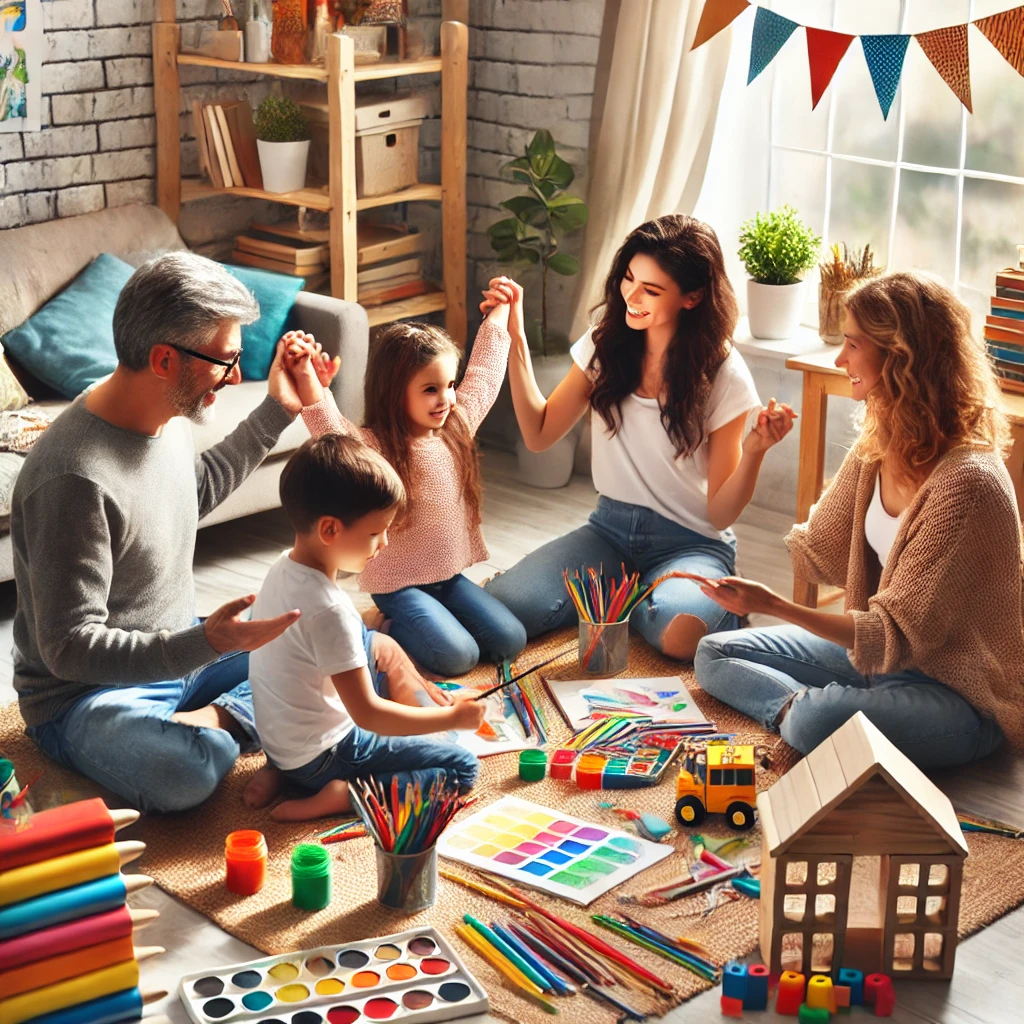
Introduction
Creative play is an essential part of fostering a child’s imagination and problem-solving skills. In today’s fast-paced world, finding engaging and meaningful ways to nurture creativity at home is more important than ever. This article explores practical and enjoyable activities that parents can implement to enhance their child’s creative thinking and overall development.
1. The Importance of Creative Play
1-1. How Creativity Influences Child Development
Creativity isn’t just about art; it’s a key factor in developing problem-solving skills, emotional expression, and resilience. For example, children who engage in creative activities like drawing or storytelling often display better cognitive flexibility and emotional regulation.
1-2. Simple Ways to Cultivate Creativity in Daily Life
Daily interactions can become opportunities for creativity. For instance, involving your child in meal preparation allows them to experiment with colors and textures while learning about nutrition. Activities like gardening can also encourage curiosity and responsibility.
1-3. The Joy of Shared Creative Activities
Shared creativity builds stronger family bonds. Activities like collaborative painting or creating a family scrapbook not only spark imagination but also create lasting memories. In our family, making DIY holiday decorations has been a wonderful tradition that inspires teamwork and laughter.
2. Artistic Activities at Home
2-1. Exploring Beyond Traditional Drawing
Art doesn’t stop at drawing; try introducing sculpting with clay, making collages from old magazines, or experimenting with watercolors. These diverse activities provide new challenges and avenues for self-expression.
2-2. Upcycling for Creative Recycling
Turn trash into treasure by crafting with recycled materials. For example, use empty toilet paper rolls to create imaginative characters or build a castle out of cardboard boxes. These activities teach environmental responsibility while encouraging ingenuity.
2-3. Inspiring Freeform Creativity
Let your child explore their artistic instincts with no predetermined outcomes. Set up a space with paints, crayons, and markers, and let them freely express their thoughts and emotions. These sessions often result in delightful surprises and profound insights.
3. Storytelling Activities to Stimulate Imagination
3-1. Creating Original Stories Together
Storytelling can unlock a child’s creativity and language skills. Start by brainstorming characters, settings, and plots together. For example, you might invent a story about a magical forest where animals talk and solve mysteries.
3-2. Using Props and Toys to Bring Stories to Life
Incorporate everyday items like puppets, action figures, or household objects as props to enrich the storytelling experience. A simple sock puppet can become a wise wizard, sparking endless imaginative scenarios.
3-3. Role-playing through Pretend Play
Encourage your child to act out scenes from their favorite stories or create new adventures. Pretend play helps them develop empathy and social skills by imagining different perspectives and roles.
4. Choosing the Right Toys and Tools for Creativity
4-1. Building Creativity with Blocks and Bricks
Building toys like LEGO foster spatial awareness and problem-solving abilities. Challenge your child to recreate a favorite building or invent their own futuristic city.
4-2. Engaging Minds with Puzzles and Mazes
Puzzles and mazes are excellent for developing logical thinking and patience. Choose themes that match your child’s interests, such as animal-shaped puzzles or treasure hunt mazes.
4-3. Learning Through DIY Kits
DIY kits offer hands-on learning opportunities in areas like robotics, painting, or crafting. For instance, assembling a solar-powered toy car teaches both engineering concepts and environmental awareness.
5. How Parents Can Foster Creativity
5-1. Valuing the Process Over the Outcome
Avoid focusing solely on results. Encourage your child to enjoy the creative process, whether their art looks polished or abstract. This mindset builds confidence and a love for exploration.
5-2. Asking Thought-Provoking Questions
Ask open-ended questions to stimulate your child’s imagination, such as “What do you think happens in the clouds?” or “How would you design a house for a giant?” These conversations inspire creativity and critical thinking.
5-3. Sharing Creative Moments Together
Dedicate time to joint projects, such as designing greeting cards or creating a family storybook. These moments strengthen your bond and demonstrate the value of collaboration.
Conclusion
Fostering creativity at home is a rewarding journey that enriches a child’s life and strengthens family connections. By integrating artistic, imaginative, and interactive activities into daily routines, parents can nurture their child’s unique talents and open doors to endless possibilities. Remember, the goal is to enjoy the process and celebrate every moment of discovery together.


Comment